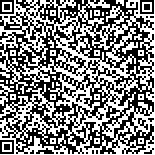| 摘要: |
| 麻痹性贝类毒素污染是世界共同关注和重点管控的食品安全问题, 其溯源一直是产业监管的难点和技术重点。基于指纹溯源技术理论, 采用室内模拟3种产毒藻暴露紫贻贝后风险形成过程, 开发基于超高效液相色谱-四极杆-静电场轨道阱高分辨质谱(UPLC-Q-Exactive MS)鉴定麻痹性贝类毒素区域特征的指纹溯源技术。结果表明, 采用乙腈/甲醇/丙酮(体积比为1︰1︰1)混合溶液作为提取剂, C8色谱柱联合正离子模式, 质荷比(m/z) 100~600和Amide色谱柱联合正离子模式, m/z 600~1 500作为色谱质谱检测条件下, 提取的化合物数量较多且稳定性良好, 覆盖了40.4%指纹信息; 紫贻贝与产毒藻中的共检出11种毒素成分, 且具有高度相关性。N-磺酰胺甲酰基类毒素(如C类)和膝沟藻毒素(GTX类)在暴露期发生了显著的代谢转化; 将摄食3种产毒藻后紫贻贝的差异化合物与特征毒素组分进行主成分分析及正交偏最小二乘法判别分析, 共筛选出13种复合指纹物质。构建6种特征物质的Fisher判别模型, 交叉验证准确率为88.9%, 可实现产毒藻种溯源。该研究建立了基于超高效液相色谱-四极杆-静电场轨道阱高分辨质谱UPLC-Q-Exactive MS紫贻贝特征指纹溯源技术, 初步实现了从污染麻痹性贝类毒素的贝类到肇事藻种的逆向溯源,可应用于贻贝麻痹性贝类毒素风险溯源研究。 |
| 关键词: 溯源 产毒藻 麻痹性贝类毒素 特征指纹 提取方法 |
| DOI:10.11693/hyhz20230500110 |
| 分类号: |
| 基金项目:国家自然科学基金项目资助,32072329号;现代农业产业技术体系专项资金资助,CARS-49号;中国水产科学研究院基本科研业务费资助,2023TD76号。 |
附件 |
|
| CONSTRUCTION OF A FINGERPRINT TRACEABILITY TECHNIQUE BASED ON UPLC-Q-EXACTIVE MS FOR THE CHARACTERIZATION OF PARALYTIC SHELLFISH POISON |
|
ZHANG Fan1,2, ZHENG Guan-Chao1, WANG Xiao-Xiao1, ZHAI Yu-Xiu1, TAN Zhi-Jun1,3, WU Hai-Yan1
|
|
1.Key Laboratory of Testing and Evaluation for Aquatic Product Safety and Quality, Ministry of Agriculture and Rural Affairs, Yellow Sea Fisheries Research Institute, Chinese Academy of Fishery Sciences, Qingdao 266071, China;2.Collage of Food Sciences & Technology, Ocean University of Cina, Qingdao 266003, China;3.State Key Laboratory of Mariculture Biobreeding and Sustainable Goods, Yellow Sea Fisheries Research Institute, Chinese Academy of Fishery Sciences, Qingdao 266071, China
|
| Abstract: |
| The risk of paralytic shellfish toxins (PSTs) in bivalves has become a serious food safety issue of common concern worldwide, especially due to the difficulty how to trace the positive products to their farming area. We developed a fingerprinting technique based on ultra-performance liquid chromatography-quadrupole electrostatic field orbitrap high-resolution mass spectrometry(UPLC-Q-Exactive MS) to identify the regional characteristics of paralytic shellfish toxin by simulating the changes of toxin in three species of toxic algae after exposure to Mytilus galloprovincialis and establishing a pretreatment and chromatographic mass spectrometry method for the characteristic fingerprint samples. Results show that the extraction of the compounds by acetonitrile/methanol/acetone (1︰1︰1, v︰v︰v), positive ion mode m/z 100~600 using C8 column and positive ion mode m/z 600~1 500 using amide column was efficient and stable, covering 40.4% of the compounds in total. And the toxin components of the M. galloprovincialis were metabolically transformed after ingestion of different toxin-producing algae. The principal component analysis (PCA) and orthogonal signal correction partial least squares-discriminant analysis (OPLS-DA) models were conducted to identify 13 fingerprints for the identification of algae species, and the cross-validation accuracy of the Fisher discriminant model was 88.9%. The fingerprint traceability technology based on UPLC-Q-Exactive MS on M.galloprovincialis traits has preliminarily realized the retrospect searching for accountable algae species of the poison contamination to shellfish, and shall be promoted in the cultures of mussel or other shellfish. |
| Key words: traceability toxic microalgae paralytic shellfish toxins characteristic fingerprints extraction methods |
